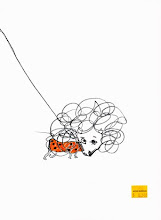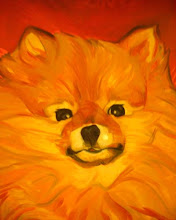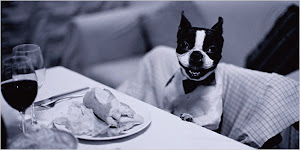London was a-twitter about the new Breakfast at Tiffany's, the first-ever stage production of the book and beloved story of Holiday Golightly, a young woman of sketchy morals and indeterminate provenance who delights in New York and goes to Tiffany's when the world is too ruthless. The book by Truman Capote was selling out at bookstores, and magazines and fashion spreads were devoted to the "new" Holly, or at least the actress now playing her.
The play's producers were very careful to warn all that their production was 'very different' from the movie, and they followed Truman Capote's novella extremely closely. Alas they followed the words and not the nuance of it, and thus their play is indeed very different from the movie. It is not stylish.
Breakfast at Tiffany's is an iconic fashion movie, and there is not a woman alive who has not at some point in her life wanted to look a little like Holly. Or, show me the woman who denies this and I'll show you a liar who no longer fits into the little black dress she owns.
So pity the poor star and pity the poor costumer who must walk in the footsteps of Audrey Hepburn and the movie from which a million fashion dreams were made. The producers of the theatrical version avoided the trouble by setting the story in the 40's, with more or less period costume, rather than the uber-elegant late 50's of the film. This is accurate in one sense -- while the story is told in the late 50's, the narrator is recalling events that occurred 15 years earlier.
Why the playwright chose to lift dialogue and copy directly from the book and yet the producers ignored the very specific descriptions of Holly is a mystery.
Truman Capote, being a southern gentleman and maybe on account of being a gay man, had an acute sense of women and their style. He loved the "swans" as he called them, Babe Paley and Slim Keith, Marella Agnelli -- his friends and all wildly gorgeous and elegant, who indeed live in popular imagination as fashion icons even today.
The swan of his imagination is of course Holly, and she emerges fully formed-- small, slim, elegant and ephemeral. She comes from no where, she makes herself up as she goes along, she is an enigma that is nonetheless as identifiable as the statue of liberty.
Capote describes her extremely carefully. Her cropped hair is various shades of tawny blonde, her eyes are wide set and flecked, slightly squinty from the need for glasses. She wears only sunglasses though, prescription, day or night. She is ballerina-like, and wears simple, elegant black dresses; she is never seen without pearls in her ears and excellent shoes. She won't read bad news without putting on her lipstick first.
Given that Holly exists during the war years, what Capote has described and the movie depicts is an utterly modern and fresh style -- Holly's is simple, spare, fresh and elegant despite the depravity of her actual existence. Her refined, intelligent style is a counterpoint to her utterly modern set of values. She won't turn on a friend, she is open to the weirdnesses of others (in the book she likes dykes as housemates and is willing to spank men if that's what gets them through the night) and though she profits from it in the form of $50 per trip to the loo, she has compassion for the freaks and fragile souls that cross her path, making a point of ensuring even the ugliest little man feels tall and handsome. She is utterly American in that she is her own invention and always on the road to somewhere else, a free spirit who nonetheless gets scared of all that freedom. Moreover, she is open about the fact that the only real career path for a woman is a man and so she wants a rich one. This forthrightness, if that is a word, is out of its time; Holly is set in the war years and born in the straightjacket 50's. The clue that she knows it, Capote knows it, and the subliminal affirmative message in the movie is her style. Simple, straightforward, and not as easy as it looks.
In the book and the movie, Holly is different from the others; younger, less constrained, more sleek and modern. In the play she fits in, she is part of the scenery rather than standing away from it as a beacon of what is to come. While it might be "just clothes" to many, Capote and the filmmaker used clothing as semaphore of something bigger and better than mere cloth. Her style is as much a character as the character of Holly herself. How profoundly the players on the stage and those guiding them have utterly, totally, missed the point.
And what a shame. It would be interesting to see what Holly might look like now.
Subscribe to:
Post Comments (Atom)












No comments:
Post a Comment